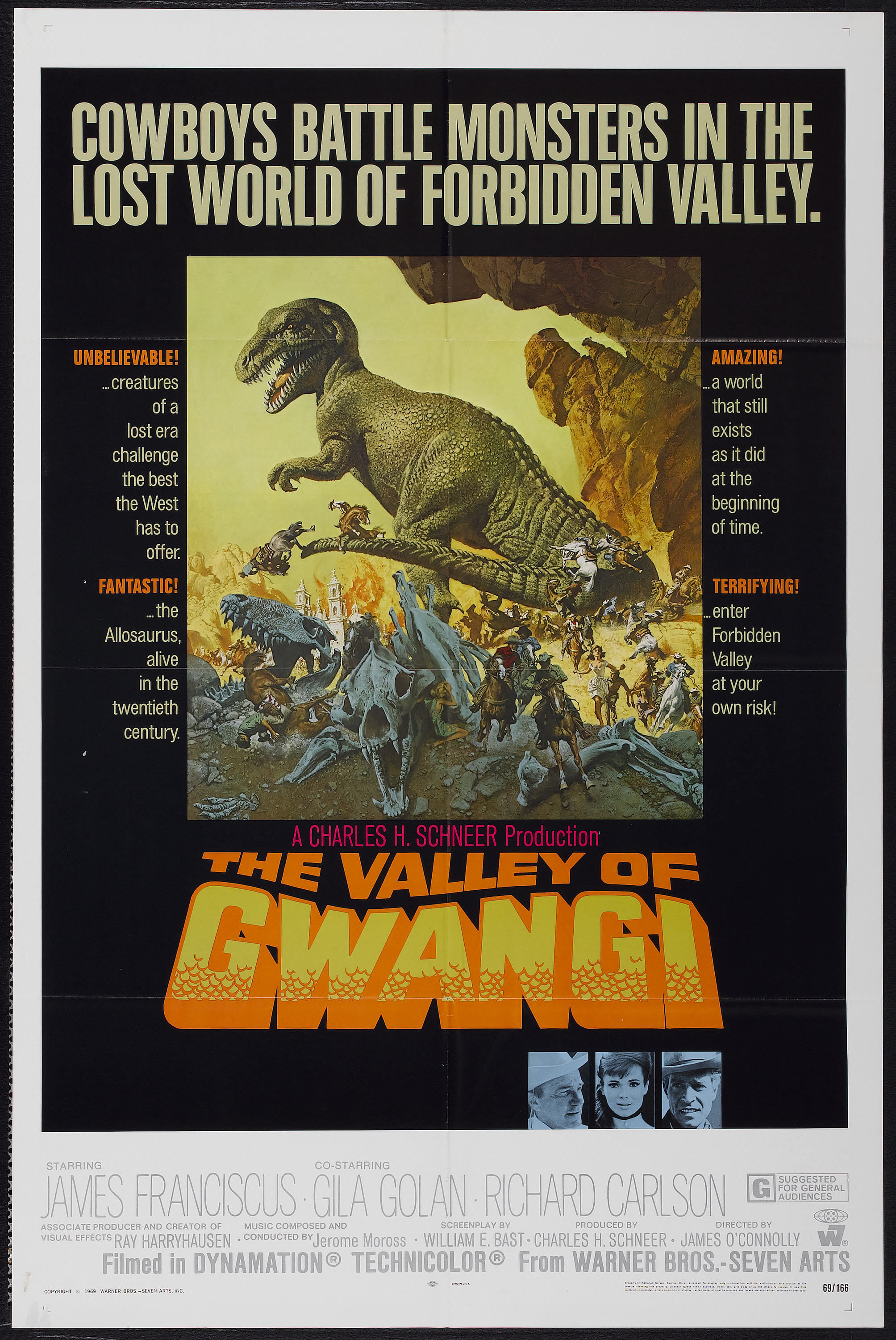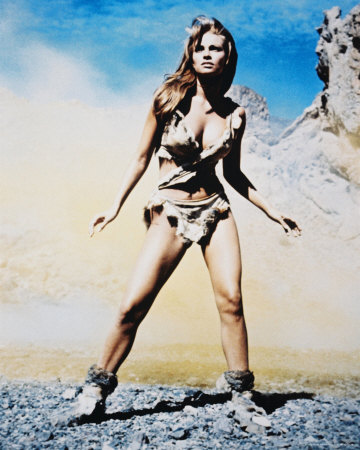
VALLEY OF GWANGI (1968, directed by Jim O’Connelly, 96 minutes, U.S.)
 BY DAN BUSKIRK FILM CRITIC Secret Cinema will be offering a free screening of their print of the 1969 Technicolor fantasy film Valley of Gwangi tonight at 7:00pm at the American Philosophical Society. The film was directed by Jim O’Connolly but is defined by its gorgeous special effects by legendary animator Ray Harryhausen. Harryhausen found his calling at the age of thirteen when he saw the original 1933 King Kong at Grauman’s Chinese Theater, where he was mesmerized the the model animation work of Willis O’Brien. He contacted O’Brien on the MGM set while still in his teens and ultimately apprenticed for the animator on 1949’s giant gorilla adventure Mighty Joe Young. It’s hard to believe that in the 1950’s he pretty much had the field of figure animation to himself, specializing in films where the animated figures interact with live action settings. In 1955 he began his string of films with a giant octopus in It Came From Beneath the Sea, and went on to compile fourteen features including Earth Vs. The Flying Saucers, Twenty Million Miles To Earth and The Seventh Voyage of Sinbad.
BY DAN BUSKIRK FILM CRITIC Secret Cinema will be offering a free screening of their print of the 1969 Technicolor fantasy film Valley of Gwangi tonight at 7:00pm at the American Philosophical Society. The film was directed by Jim O’Connolly but is defined by its gorgeous special effects by legendary animator Ray Harryhausen. Harryhausen found his calling at the age of thirteen when he saw the original 1933 King Kong at Grauman’s Chinese Theater, where he was mesmerized the the model animation work of Willis O’Brien. He contacted O’Brien on the MGM set while still in his teens and ultimately apprenticed for the animator on 1949’s giant gorilla adventure Mighty Joe Young. It’s hard to believe that in the 1950’s he pretty much had the field of figure animation to himself, specializing in films where the animated figures interact with live action settings. In 1955 he began his string of films with a giant octopus in It Came From Beneath the Sea, and went on to compile fourteen features including Earth Vs. The Flying Saucers, Twenty Million Miles To Earth and The Seventh Voyage of Sinbad.
Harryhausen’s movies are now considered fantasy film classics, wildly influential to the blockbuster cinema that Lucas and Spielberg popularized in the 1970’s but by the mid-sixties he was in a cold streak, not finding much financial success with version of the Jason & The Argonauts myth or his Jules Verne adaptations, First Man the Moon and Mysterious Island. Struggling to get his own projects funded he hired himself out to Britain’s Hammer Studios to create the dinosaurs for the Racquel Welch fur-bikini epic One Million Years B.C. The film was one of 1966’s top grossers and led to Warner Brothers/Seven Arts giving the greenlight to another animated dinosaur film.
Harryhausen ended up pulling a script from his garage of an unrealized Willis O’Brien project (O’Brien passed away in ’62) that became Valley of  Gwangi. Perhaps it is the spirit of O’Brien that makes Gwangi the liveliest of Harryhausen’s films. Gone is the faux antiquated language of his historical epics and rather than a square-jawed hero, at the center of Gwangi is the under-rated James Franciscus. He plays Tuck, a carnival con man who ran out on the circus’ lovely cowgirl T.J. (Gila Golan). Set in turn of the 20th century Mexico (but shot in Spain) their circus finds a miniature per-historic horse that leads them to a secret valley where dinosaurs still run free. Harryhausen’s effects for the roping of the Allosaurus used six cowboys and two dinosaurs, took over five months to shoot and is one of the most masterful scenes in his career. And it’s just one of the show-stopping special effect moments in the film, which beautifully climaxes with God and nature meeting in an ancient church for the finale.
Gwangi. Perhaps it is the spirit of O’Brien that makes Gwangi the liveliest of Harryhausen’s films. Gone is the faux antiquated language of his historical epics and rather than a square-jawed hero, at the center of Gwangi is the under-rated James Franciscus. He plays Tuck, a carnival con man who ran out on the circus’ lovely cowgirl T.J. (Gila Golan). Set in turn of the 20th century Mexico (but shot in Spain) their circus finds a miniature per-historic horse that leads them to a secret valley where dinosaurs still run free. Harryhausen’s effects for the roping of the Allosaurus used six cowboys and two dinosaurs, took over five months to shoot and is one of the most masterful scenes in his career. And it’s just one of the show-stopping special effect moments in the film, which beautifully climaxes with God and nature meeting in an ancient church for the finale.
Harryhausen delivered more effects shots than any of his film prior to Gwangi but the film still took a bath at the box-office. Maybe it was because it got buried under a inappropriate co-feature in a double-bill (Marianne Faithfull’s mod vehicle Girl On A Motorcycle), maybe its cowboy and dinosaurs template seemed too old-fashioned for the counter-culture revolution happening at the moment. Today what survives is Harryhausen’s obsessive love at bringing his impossible creatures to life and over forty years later it is a love that conquers all the CGI Hollywood can muster.
